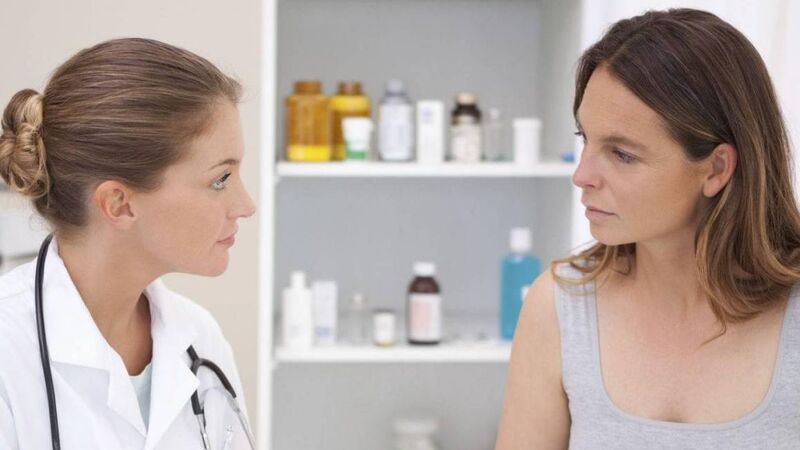Women don’t have to suffer in silence with vaginal atrophy

Vaginal atrophy is characterised by vaginal dryness, vaginal irritation, painful sex, and bleeding after sex.
VAGINAL atrophy, when the vaginal walls get thinner and more inflamed, affects more than 50% of post-menopausal women.
It is caused by the drop in oestrogen in women’s bodies after menopause; 70% of breast cancer survivors also suffer from vaginal atrophy, as a result of the treatment they’ve had.
Vaginal atrophy is characterised by vaginal dryness, vaginal irritation, painful sex, and bleeding after sex. It can also cause continence issues, with some women feeling the need to pee more frequently or have what’s called urge incontinence, where the urge to pee comes on suddenly.
Women with vaginal atrophy may also get recurring urinary tract infections (UTIs).
Because sex can be painful for those with vaginal atrophy, 62% of women with the condition avoid sexual intimacy with their partner. This can have a knock-on effect on their relationship, which only adds to the mental toll of the condition.
There are existing treatments for vaginal atrophy, including hormonal therapy, laser therapy, and over-the-counter creams and moisturisers, but these don’t suit all women, explains Paula Newell, founder of AVeta Medical.
“Not every woman wants to or can take the hormonal option. In some cases it might not agree with them, and others do not want to be taking hormonal therapy long- term.
Some women find the over-the-counter creams messy and inconvenient, and laser therapy can be prohibitively expensive for most women.
Galway-based Paula is a paediatric occupational therapist by training. She started looking into vaginal atrophy in 2016, after enrolling in the BioInnovate medical device training course in NUI Galway. While on the programme, which focuses on finding solutions for under-served conditions, she realised there was a need for a new type of treatment for vaginal atrophy.
She developed the VITA AV, a device that repairs the vaginal tissue. The VITA AV uses an intravaginal tip that’s inserted into the vagina and induces an inflammatory response to stimulate the natural healing process.
The micro-injury to the vaginal tissue stimulates enhanced blood flow, angiogenesis and moisture levels, which helps to rejuvenate the vaginal tissue. Women need to use the device for just five minutes each month.
We have tested the device in a clinical trial and had positive results. Eight out of the 12 study participants said it reduced or eliminated their symptoms entirely within one month.
“Vaginal atrophy is a chronic progressive disease, so women will need to continue to use the device,” explains Paula.
“Patient and clinician feedback has been an important part of our product development, including the development of the prototypes, the material we’ve used, and the price point,” she says.
“For now, the device is available in a clinic setting, but the next generation of the device will be for home use. We’ve consciously made the VITA AV an affordable option for women as this was one of the main points that kept coming up in our product research,” says Paula.
Users will need to purchase a new tip each month. The initial starter pack from AVeta Medical will include the controller and three tips and costs €500. After the first three months, women will be re-assessed by their clinician.
AVeta has now completed pre-clinical animal trials, which have validated the functionality of the device. It is on track to achieve authorisation from the Food and Drug Administration (FDA) by 2024 and will launch in the U.S after that. The device will then be rolled out in Ireland and Europe in 2026.
We’re working with ob-gyns, as well as menopause clinics and other clinicians to get the product into the hands of women who need it.
"In the U.S, where we’ll first launch, we will be starting off in private clinics and will then move on to public hospitals.
“In Ireland, we’re already building relationships with women’s clinics and menopause hubs around the country. We’ve had great support from Health Innovation Hub Ireland (HIHI) in this area,” explains Paula.
She also credits the work the HIHI is doing in the area of femtech when it comes to changing the conversation around menopause, and for raising awareness of the symptoms women are experiencing.
“Just a few years ago, vaginal atrophy wouldn’t have been something women were comfortable talking about. They may not even have known that was what was wrong with them. But now we’re getting better at training our ob-gyns on menopause and all its symptoms, so they are asking the questions when they treat women, which means women are getting more information, and are not suffering in silence,” says Paula.






 App?
App?





